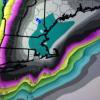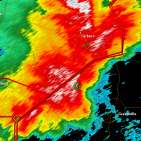-
Posts
72,923 -
Joined
-
Last visited
About 40/70 Benchmark

- Birthday 11/16/1980
Profile Information
-
Four Letter Airport Code For Weather Obs (Such as KDCA)
KLWM
-
Gender
Male
-
Location:
Methuen, MA, 154' ASL 30 mi N of Boston
-
Interests
Snow, Canes , Baseball, Football and Keeping Fit.
-

2025-2026 ENSO
40/70 Benchmark replied to 40/70 Benchmark's topic in Weather Forecasting and Discussion
I know someone posted the JJ MEI value, but any idea why it has't updated here? https://psl.noaa.gov/enso/mei/ -

July 2025 Obs/Disco ... possible historic month for heat
40/70 Benchmark replied to Typhoon Tip's topic in New England
No, next month. -

July 2025 Obs/Disco ... possible historic month for heat
40/70 Benchmark replied to Typhoon Tip's topic in New England
It's usually time to draw the shades and hide in the AC if you hate dews from now until about first week or two of September.....this next two months are usually awful, save for a rogue pleasant day or three- -

2025-2026 ENSO
40/70 Benchmark replied to 40/70 Benchmark's topic in Weather Forecasting and Discussion
Completely agree here. -

2025-2026 ENSO
40/70 Benchmark replied to 40/70 Benchmark's topic in Weather Forecasting and Discussion
Yes, but most of the warming is in the West Pacific, which biases the hemisphere towards a cool ENSO regime. -

2025-2026 ENSO
40/70 Benchmark replied to 40/70 Benchmark's topic in Weather Forecasting and Discussion
It's safe to say everything correlates to La Niña in this "new, warmer climate". -

2025-2026 ENSO
40/70 Benchmark replied to 40/70 Benchmark's topic in Weather Forecasting and Discussion
Which part do you want me to elaborate on? -

2025-2026 ENSO
40/70 Benchmark replied to 40/70 Benchmark's topic in Weather Forecasting and Discussion
Yea, I expect a step back from last year in the extra tropical Pacific before a more concerted and consistent recovery takes place, thereafter. -

2025-2026 ENSO
40/70 Benchmark replied to 40/70 Benchmark's topic in Weather Forecasting and Discussion
I think he strongly favors a 2013-2014 like impending winter season and is thus basically rip and reading the 2013 troipical output. I think there already is and is going to be a more established cool ENSO pardigm than evident that year. -

2025-2026 ENSO
40/70 Benchmark replied to 40/70 Benchmark's topic in Weather Forecasting and Discussion
I'll def take the over on Phily's numbers. -

2025-2026 ENSO
40/70 Benchmark replied to 40/70 Benchmark's topic in Weather Forecasting and Discussion
I think you guys need to be leery of a late surge in ace from intense home brew and/or GOM systems...it can catch up quickly, though it is tougher without the long-trackers. When a system does encounter a favorable upper level pocket, the entire basin is undisturbed.... -

2025-2026 ENSO
40/70 Benchmark replied to 40/70 Benchmark's topic in Weather Forecasting and Discussion
Nothing they say is outlandish or patently incorrect.....but IMHO, they tend to seek avenues to cold/snow. For instance, notice they make no mention of being near or just after solar max, which is a pretty strong counter argument to the presented evidence for a very weak PV. I found the info about specific areas of sea ice favoring weaker (stronger) PV interesting...the QBO relationship is common sense amongsts weather circles, but I really didn't care for the weak cool ENSO/weak polar vortex association....that speaks more to how strongly intense cool ENSO events favor a stronger PV IMHO....weaker ENSO just means that other extra tropical influences will drive the bus. -

2025-2026 ENSO
40/70 Benchmark replied to 40/70 Benchmark's topic in Weather Forecasting and Discussion
I used to follow them closely, but really not impressed....they have a low-key cold bias IMHO. -

July 2025 Obs/Disco ... possible historic month for heat
40/70 Benchmark replied to Typhoon Tip's topic in New England
An inch or two of snowfall is basically noise... -

July 2025 Obs/Disco ... possible historic month for heat
40/70 Benchmark replied to Typhoon Tip's topic in New England
Typo..yea.











